The 10 Best Headless Browsers for Web Scraping: Pros & Cons
Take a Quick Look
Want to supercharge your web scraping? Headless browsers are your secret weapon. Discover how they work, why they're awesome, and which ones will take your scraping game to the next level.
Have you ever needed to efficiently extract large amounts of online data, only to find that traditional browsers slow you down? From price tracking to competitive analysis, web scraping is crucial in automating data collection. However, using a regular browser for scraping can be slow and inefficient. When speed and automation matter, what's the best solution?
In this guide, we'll explore the 10 best headless browsers for web scraping, breaking down their strengths and weaknesses to help you pick the right tool for your needs.
What Is a Headless Browser?
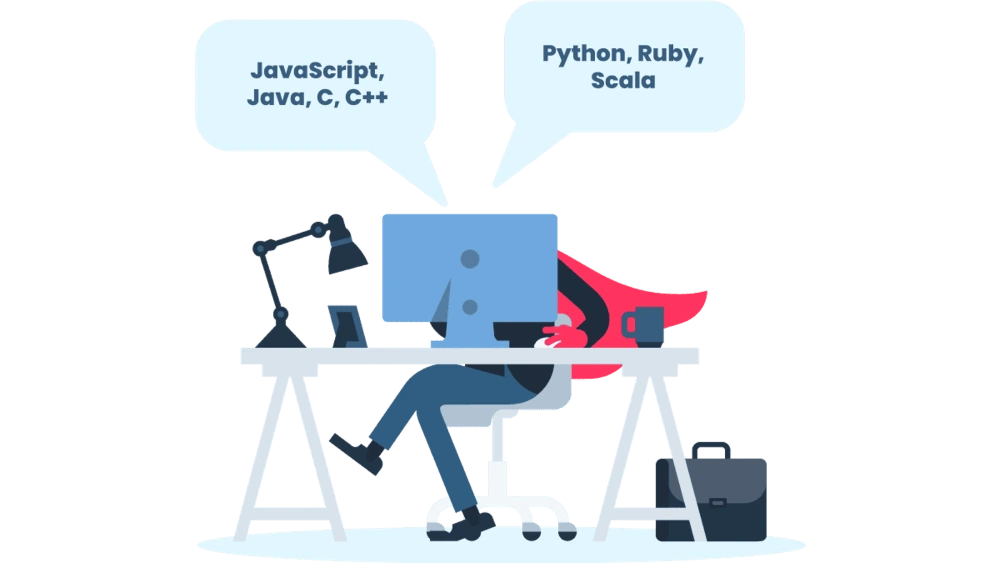
Simply put, a headless browser is a web browser without a graphical user interface (GUI). It operates in the background, fetching and rendering web pages just like a regular browser but without displaying them on your screen. This makes headless browsers perfect for tasks like web scraping, automated testing, and performance monitoring.
By the way, the headless mode of an antidetect browser, like AdsPower, offers similar capabilities to traditional headless browsers but with enhanced stealth. While traditional headless browsers often get flagged due to missing fingerprints, AdsPower's headless mode helps bypass detection by masking and modifying digital fingerprints, making your requests appear as if they’re coming from unique, legitimate users.
|
Use Case |
AdsPower Headless Mode |
Traditional headless browsers |
|
Multi-account management |
✅ Yes |
❌ No |
|
Bypassing bot detection |
✅ Yes |
❌ No |
How to Start AdsPower in Headless Mode?
1. Go to API Settings in AdsPower and click Generate or Reset to obtain your API key.
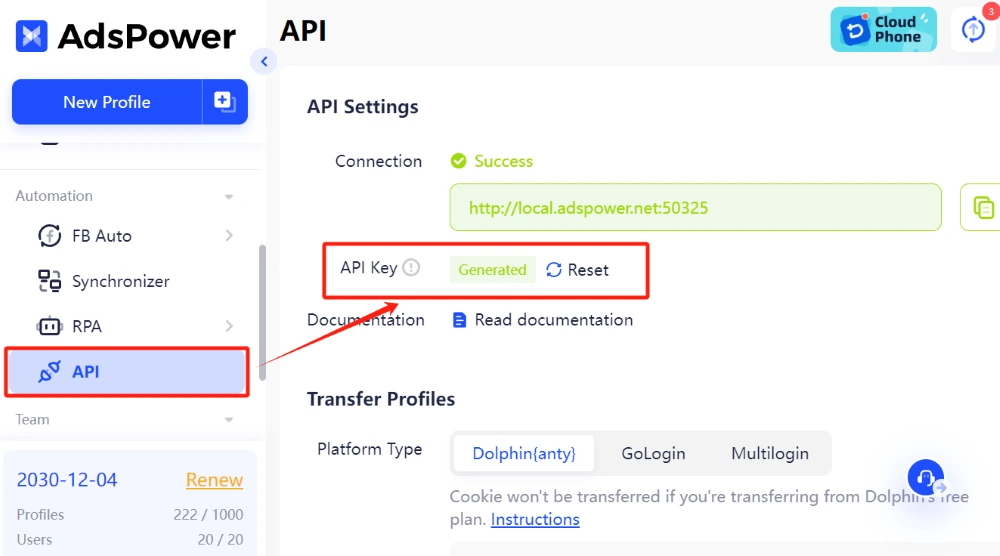
2. Start AdsPower in Headless Mode (Open CMD or Terminal in the AdsPower root directory)
-
Windows: "AdsPower Global.exe" --headless=true --api-key=XXXX --api-port=50325
-
macOS: "/Applications/AdsPower Global.app/Contents/MacOS/AdsPower Global" --args --headless=true --api-key=XXXX --api-port=50325
-
Linux: adspower_global --headless=true --api-key=XXX --api-port=50325
3. Check the return address in the command line to confirm successful startup.

Full Guide: AdsPower API Docs – Headless Mode
How Headless Browsers Differ from Regular Browsers?
Think of it this way: while regular browsers are designed for human interaction—with buttons to click, pages to scroll, and images to admire—headless browsers strip away the visual elements. They focus solely on functionality, allowing you to interact programmatically with websites. There are key differences that make headless browsers particularly suitable for automation tasks:
-
No GUI: Headless browsers operate without displaying the web page visually, which is beneficial for server environments as it reduces computational overhead and resource consumption. However, the lack of visual feedback can indeed make troubleshooting more challenging, as there are no visual cues to help diagnose issues.
-
Speed and Efficiency: Without the need to render visual components, headless browsers can load and process pages more quickly. This makes them ideal for scraping large volumes of data or running automated tests at scale.
-
Automation-Ready: Headless browsers are built with automation in mind. Many provide APIs or frameworks that allow developers to simulate user actions like clicking buttons, filling out forms, or navigating through pages.
-
Scalability: Since they're lightweight, you can run multiple instances of headless browsers simultaneously, making them perfect for tasks that require scalability, such as scraping thousands of pages.
The Best 10 Headless Browsers for Web Scraping
When it comes to web scraping, not all headless browsers are created equal. Here are the top options to consider for efficient and scalable data collection:
1. Puppeteer

Puppeteer is a JavaScript library that provides a high-level API to control Chrome or Firefox over the DevTools Protocol or WebDriver BiDi. It is ideal for handling JavaScript-heavy websites or executing complex browser automation tasks.
-
Supported Languages: JavaScript, TypeScript, Python,.NET, Java
|
Pros |
Cons |
|
High-level API for Chrome automation |
Limited to Chromium-based browsers |
|
Supports advanced interactions, such as clicking buttons, taking screenshots, and executing JavaScript. |
Requires Node.js environment |
|
Active community and regular updates |
No built-in multi-browser support |
2. Playwright
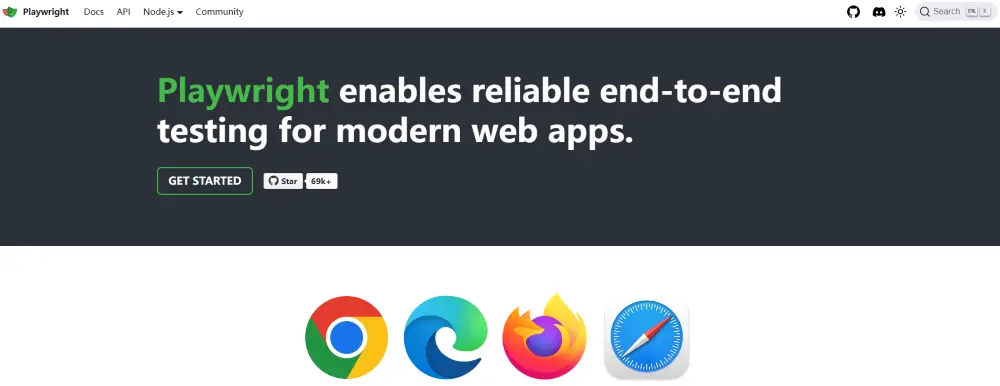
Playwright, created by Microsoft, is a powerful alternative to Puppeteer. It supports multiple browsers, including Chromium, Firefox, and WebKit, making it a versatile tool for web scraping.
-
Supported Languages: JavaScript, TypeScript, Python,.NET, Java.
|
Pros |
Cons |
|
Built-in network interception capabilities |
More demanding learning process for newcomers |
|
Built-in mobile emulation |
Requires more setup compared to Puppeteer |
|
Powerful auto-waiting mechanism |
Fewer third-party integrations than Selenium |
3. Selenium
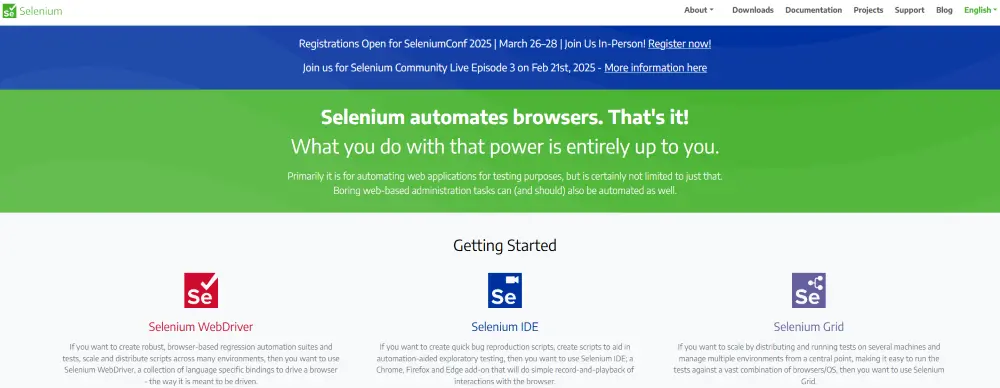
Selenium is a powerful browser automation framework that integrates various tools and libraries for web automation. Designed to comply with the W3C WebDriver specification, it offers a cross-language API compatible with all major web browsers. While primarily known for automated testing, its headless mode makes it a strong choice for web scraping, especially for tasks involving form submissions and complex user interactions.
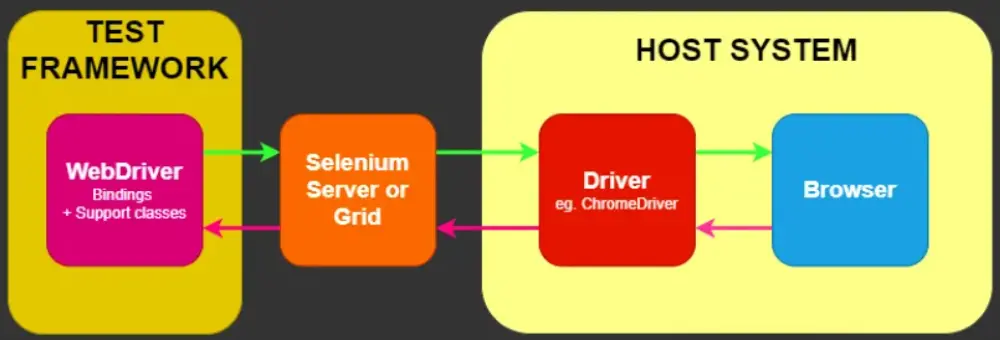
-
Supported Languages: Python, Java, C#, Ruby, JavaScript.
|
Pros |
Cons |
|
Supports multiple browsers (Chrome, Firefox, Safari, Edge) |
Slower than Puppeteer or Playwright |
|
Large community and extensive documentation |
Higher resource consumption |
|
Widely recognized in the industry |
Requires external drivers (e.g., GeckoDriver, ChromeDriver) |
4. Bright Data Scraping Browser
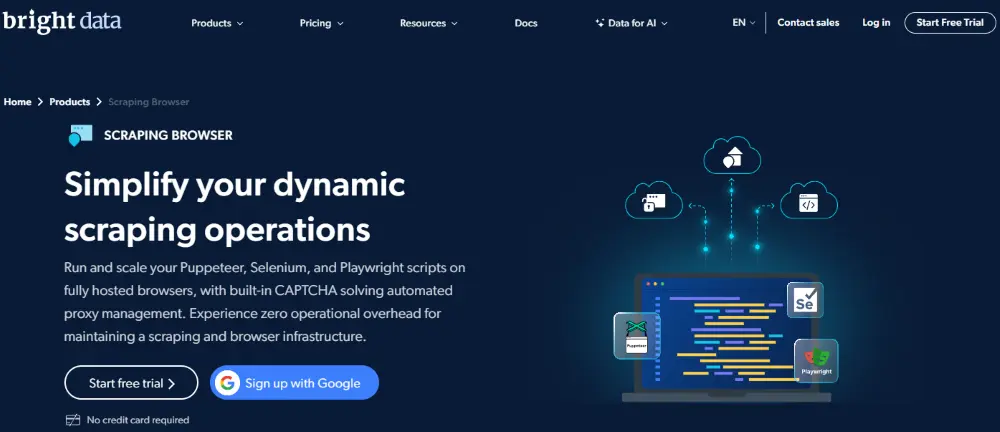
Bright Data Scraping Browser is a powerful, enterprise-grade headless browser designed for large-scale web scraping. It offers built-in proxy management, advanced anti-bot detection bypassing, and automation tools to streamline data collection. This makes it an excellent choice for businesses that need reliable and efficient web scraping solutions.
-
Supported Languages: Python, Node.js (JavaScript), and Java/C#
|
Pros |
Cons |
|
Advanced anti-bot bypassing |
Paid service |
|
Integrated proxy support |
Requires setup and configuration |
|
Optimized for large-scale scraping |
Not open-source |
5. Headless Chrome
Headless Chrome is not an independent browser but rather a mode of Google Chrome that runs without a graphical interface. As part of Google Chrome, it is one of the most popular tools for web scraping. It's reliable, fast, and easy to set up.
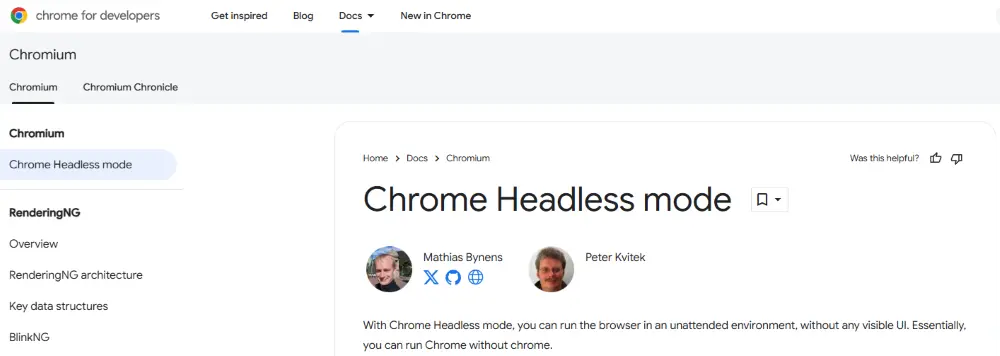
-
Supported Languages: JavaScript, Python (via Puppeteer or Selenium), Java, C#, Ruby, Go, and .NET.
|
Pros |
Cons |
|
Fast and reliable |
Limited to Chrome-based scraping |
|
Direct support from Google |
Requires manual configuration for advanced features |
|
Supports numerous languages through third-party libraries |
Can be resource-intensive for large-scale operations |
6. Headless Firefox
Headless Firefox is a mode of Mozilla Firefox that operates without a graphical user interface, allowing automated interactions with web pages through scripts. Like Headless Chrome, it is widely used for web scraping, automated testing, and browser automation. It can be controlled by Selenium, SlimmerJS and W3C WebDriver. It is a powerful tool for developers working on web projects.
-
Supported Languages: JavaScript, Python (via Selenium).
|
Pros |
Cons |
|
Works with Firefox's Gecko engine |
Slower than Chrome-based headless browsers |
|
Supports JavaScript execution |
Requires additional setup |
|
Similar functionality to Headless Chrome |
Less popular than other tools |
7. chromedp
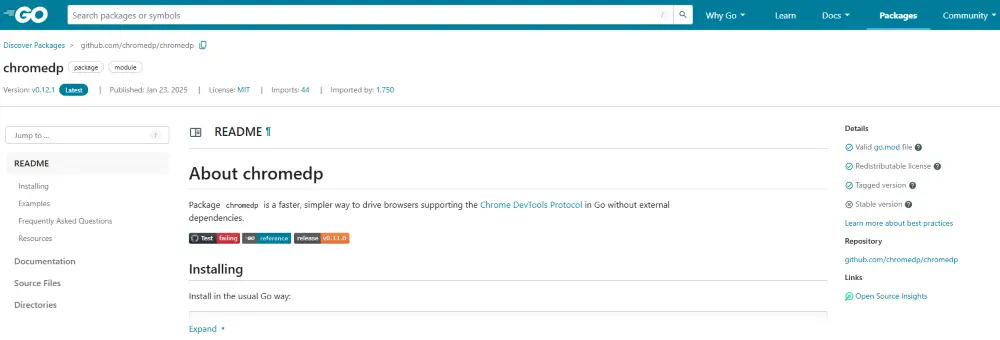
Chromedp is a faster, simpler way to drive browsers supporting the Chrome DevTools Protocol in Go without external dependencies. It is a great choice for lightweight scraping and automation tasks. However, its lack of multi-browser support limits its flexibility for some users.
-
Supported Languages: Go.
|
Pros |
Cons |
|
Native Go implementation |
Limited to Chrome-based scraping |
|
Lightweight and efficient |
Requires Go development knowledge |
|
Minimal dependencies |
Lacks multi-browser support |
8. Cypress

Cypress is primarily a testing framework but can be used for web scraping in specific scenarios. It offers built-in automation, real-time debugging, and a powerful API for interacting with web pages. However, it is not optimized for large-scale scraping like some other headless browsers.
-
Supported Languages: JavaScript.
|
Pros |
Cons |
|
Easy-to-use testing framework |
Not designed for large-scale scraping |
|
Built-in waiting and retry mechanisms |
Limited browser support (Chrome-based) |
|
Strong debugging capabilities |
Requires GUI for some interactions |
9. Zombie.js
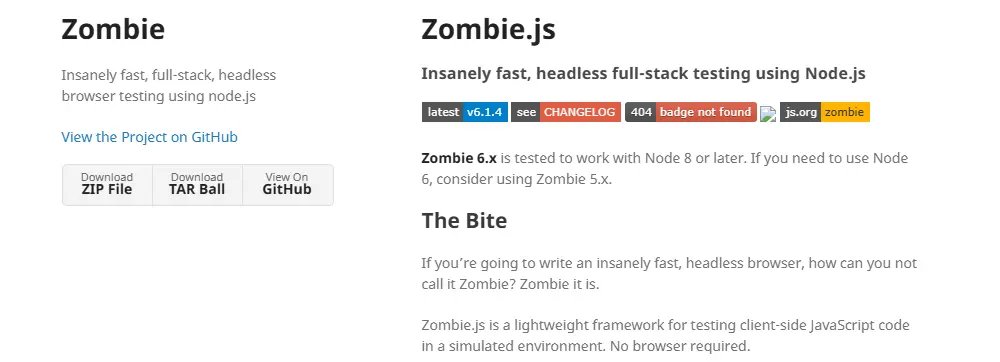
Zombie.js is a lightweight, Node.js-compatible framework for automated client-side JavaScript testing. Ideal for basic web scraping, it features a comprehensive API with built-in support for cookies, tabs, authentication, and assertions, ensuring efficient and robust testing scenarios.
-
Supported Languages: JavaScript.
|
Pros |
Cons |
|
A fully featured API |
Outdated and less active development in recent years |
|
Lightweight and high speed |
Limited browser features |
|
Integration with Node.js projects |
Not appropriate for scenarios requiring true browser rendering |
10. HtmlUnit

HtmlUnit is a Java-based headless browser that facilitates advanced interaction with websites through Java applications. It enables tasks such as form submission, hyperlink navigation, and detailed access to webpage content and structure, allowing for comprehensive manipulation and analysis of web pages.
-
Supported Languages: Java.
|
Pros |
Cons |
|
Lightweight and fast |
Limited JavaScript support |
|
Continuously improving |
Less active community |
|
Supports complex AJAX libraries; simulates Chrome, Firefox, or Edge based on configuration |
May have difficulty handling modern websites with heavy JavaScript execution |
FAQ
1. How to Control a Headless Browser for Testing and Web Scraping?
Controlling a headless browser typically involves using APIs or frameworks. For example:
-
Puppeteer: Use its Node.js library to script interactions like navigating pages and extracting data.
-
Selenium: Write scripts in your preferred programming language to automate browser actions.
-
Playwright: Take advantage of its multi-browser support to handle complex scenarios.
2. What Is the Best Lightweight Headless Browser?
If speed and resource efficiency are your priorities, consider using Headless Chrome or PhantomJS. While Headless Chrome is actively maintained and supports modern web standards, PhantomJS is still useful for basic tasks.
3. Can a Fingerprint Browser (Headless Mode) Be Used as a True Headless Browser?
A fingerprint browser in headless mode offers similar functionalities to a traditional headless browser but is not entirely the same. While it allows automated browsing without a visible UI, it also retains and modifies fingerprints to reduce detection risks. However, some advanced automation features available in traditional headless browsers may not be fully supported.
Summary
Headless browsers are indispensable tools for web scraping, offering speed, efficiency, and scalability. Whether you're a beginner or a seasoned developer, choosing the right headless browser can make a world of difference in your scraping projects. For large-scale web scraping, pairing a headless browser with AdsPower can help you avoid detection by masking digital fingerprints, ensuring smoother automation. Try AdsPower for free today and take your scraping efficiency to the next level!

People Also Read
- Black Friday Ads A/B Testing: How to Safely Run Multiple Ad Experiments
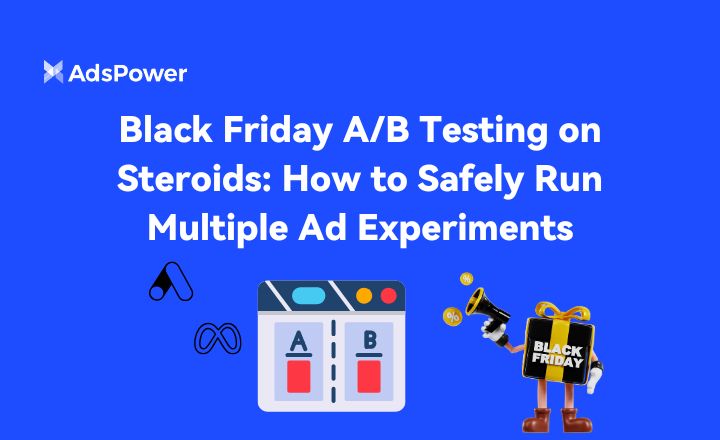
Black Friday Ads A/B Testing: How to Safely Run Multiple Ad Experiments
Want to scale your Black Friday ads without breaking algorithms or risking account bans? Learn how to use multiple ad accounts and AdsPower profiles
- Why Is My LinkedIn Verification Not Working? How to Fix
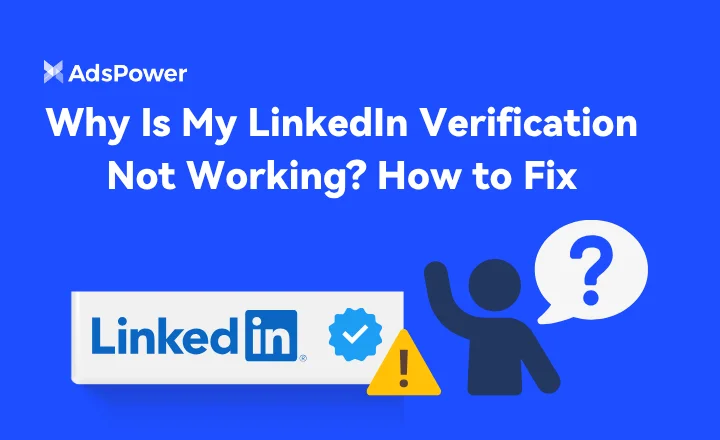
Why Is My LinkedIn Verification Not Working? How to Fix
Facing the "LinkedIn verification not working" error? This guide explores fixes for ID and Persona verification, explains the process, safety, and get
- How to Earn Money from LinkedIn in 2025: Proven Ways to Monetize Your Account

How to Earn Money from LinkedIn in 2025: Proven Ways to Monetize Your Account
Discover how to earn money from LinkedIn in 2025 with proven strategies. Monetize your account, grow followers, attract clients, and use AdsPower to h
- What is PrizePicks? Can You Make Multiple PrizePicks Accounts?
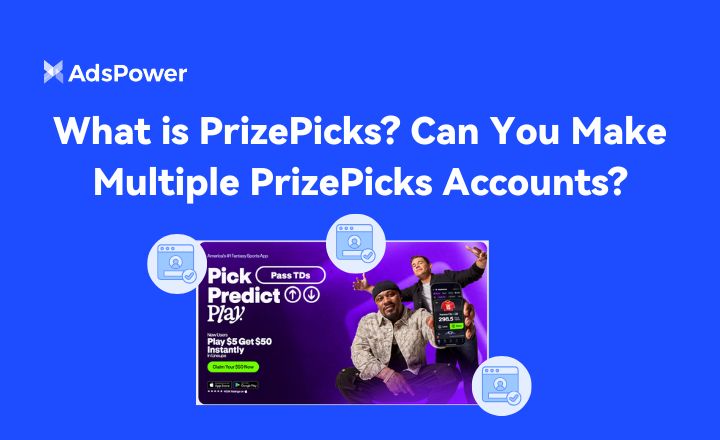
What is PrizePicks? Can You Make Multiple PrizePicks Accounts?
Wondering, "Can you make multiple PrizePicks accounts?" Get the definitive answer. Explore what PrizePicks is, its legitimacy, and the crucial rules
- How to Watch TikTok Unblocked at School?
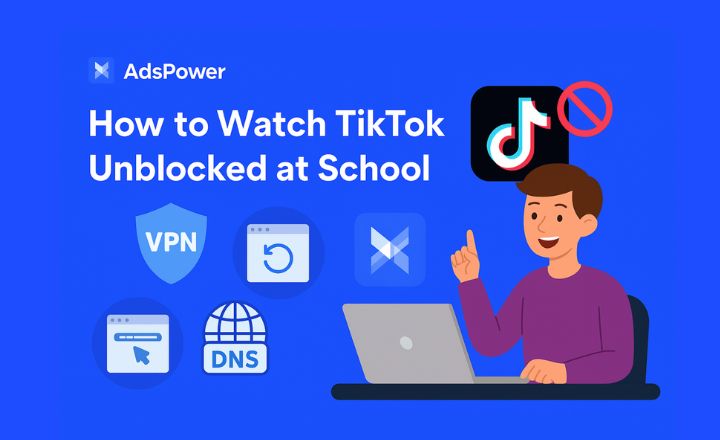
How to Watch TikTok Unblocked at School?
Learn how to watch TikTok unblocked at school using VPNs, proxies, DNS changes, or AdsPower browser - safe, legal, and effective ways to bypass limit


